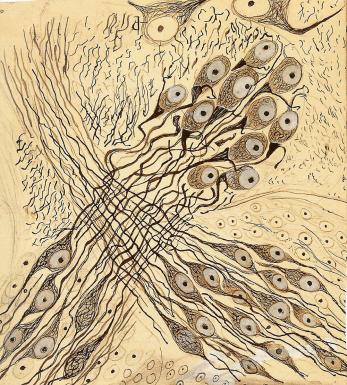Throughout the early part of human history, the brain and its function was a complete mystery, as many of the greatest ancient minds had no idea what purpose the brain served and how it also fulfilled that purpose. For example, one of the greatest classical philosophers in history, Aristotle, believed the emotions and consciousness of humans came from the heart, and also believed that the brain only served a cooling purpose in order to prevent the body from overheating. However, improvements in technology allowed for the more detailed studies of the brain, which allowed for breakthroughs in the study of the structure and function of the brain. Franz Joseph Gall was the first individual to explore the brain in ways that were never used before, as he attempted to map out the individual sections of the brain that each had a specific function, in what is now known as phrenology. Similarly, Santiago Ramon y Cajal made major discoveries in the field of neuroscience and neurology, as he was able to discover the methods of how the brain communicates with rest of the body in his Neuron Theory, in which he states how the tree-like structure of neurons allows for an efficient connection with other neurons, providing a connection between neuroscience and art.
 |
| Neural connections drawn by Cajal |
It was very interesting to see how more modern technologies were also able to connect neuroscience and art. For example, artist Suzanne Anker, with collaboration from neuroscientist Giovanni Frezzeto, was able to create the FRMI butterfly to explore optical illusions that occur within the brain. Another project, called Brainbow, was able to portray beautiful colorations of the brain by using fluorescent proteins to differentiate the neurons.
 |
| Brainbow |
It was also very interesting to see how drugs such as cocaine and LSD were able to create a connection between neuroscience and art. Both cocaine and LSD were previously legal drugs that could be used for experiments, and in the late 19th century, a neurologist named Sigmund Freud experimented with cocaine and it was interesting to see how cocaine influenced his ideas. LSD, which was first synthesized by Albert Hofmann in 1938, is another drug that has interesting affects on the brain. While working on the drug, Albert Hofmann noted how his ingestion of the drug lead to a state of hallucination, where he was able to see a variety of colors and shapes.
 |
| A variety of colors and shaped while ingesting LSD, as described by Hofmann |
Sources:
Calderon, Trina. “Flashback: LSD Creator Albert Hofmann Drops Acid for the First Time.” Rolling Stone, Rolling Stone, 25 June 2018, www.rollingstone.com/culture/culture-news/flashback-lsd-creator-albert-hofmann-drops-acid-for-the-first-time-629085/.
Palmer, Chris. “The Neuron Doctrine, circa 1894.” The Scientist Magazine®, 1 Nov. 2013, www.the-scientist.com/foundations/the-neuron-doctrine-circa-1894-38476.
“Phrenology.” Encyclopædia Britannica, Encyclopædia Britannica, Inc., 1 May 2018, www.britannica.com/topic/phrenology.
Vesna, Victoria. “Neuroscience pt3.” YouTube, YouTube, 16 May 2012, www.youtube.com/watch?v=E5EX75xoBJ0.
Vesna, Victoria. “Neuroscience-pt1.Mov.” YouTube, YouTube, 17 May 2012, www.youtube.com/watch?v=TzXjNbKDkYI.


No comments:
Post a Comment